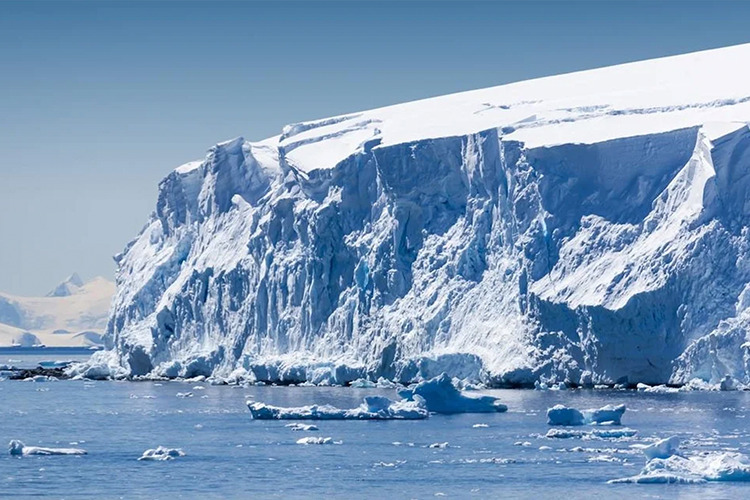
Antarctica ice sheets are being threatened by global warming. photo by Felton Davis
Doomsday Glacier threatens worldwide communities now more than ever.
Located in Western Antarctica, Thwaites Glacier is a key player in rising tides around the world, accounting for 4% of annual sea rise. Thwaites has been titled the “Doomsday” Glacier because it contains enough ice to raise sea levels by anywhere from three to ten feet. Today the glacier is melting twice as fast as it was two years ago and is retreating into the ocean at a speed of 1.3 miles per year, twice as fast as predicted. Thwaites Glacier in total loses 50 billion tons of ice every year.
Although the Thwaites glacier is roughly the size of Florida, it is only a fraction of the west Antarctic ice sheet. Unlike most of the world’s glaciers, Thwaites is not connected to the land; instead, it is connected to the seafloor. Since a large amount of the glacier is already submerged under water, it is susceptible to melting caused by currents of warm water.
According to research by the United Nations, 40% of the world’s total population lives within 60 miles from areas that would be severely affected by the rising sea levels. Although they might not experience flooding and storms, landlocked cities and communities will also be affected. A teacher of environmental science at Thomas Jefferson High School, Brett Butera explained “A lot of these places have lower economic populations, so they’re going to become environmental refugees.” Places like Colorado will take in these refugees just like how Colorado takes in refugees of war from Ukraine and Afghanistan.
The world’s coasts are not the only environments that will suffer as a result of glaciers melting and tides rising. When glaciers melt, they release fresh water into the ocean, but they also release greenhouse gasses into the atmosphere. Butera stated that “every gas in the atmosphere is trapped in the ice when it forms, so when the ice melts any gas that is present in the atmosphere at the time of the ice formation, specifically CO2 and CH4 are gonna be in there.” If enough of the Thwaits glacier melts, it would not only flood coastal communities but would also severely increase the number of greenhouse gasses in our atmosphere. This increase in greenhouse gasses would further the droughts Colorado and other desert communities face.
Now more than ever people around the world are attempting to change their lifestyle to help stop climate change and glaciers from melting. Butera believes that in order for a noticeable change, “the government needs to intervene through offering tax breaks and tax credits to incentivized buying like electric cars.” The Doomsday Glacier is caused by changing climates. This is just one symptom of human industries taking advantage of fossil fuels and oil while continuing to poison our air and water. If climate change evolves to the point where the glacier has fully melted, the rising tide will only be one of the consequences the world will face. The Doomsday Glacier is a real problem that must be stopped. Everyone needs to do a small part such as voting on environmental protection bills, or installing solar panels in your home. Hopefully this collection of small efforts can produce a big change.